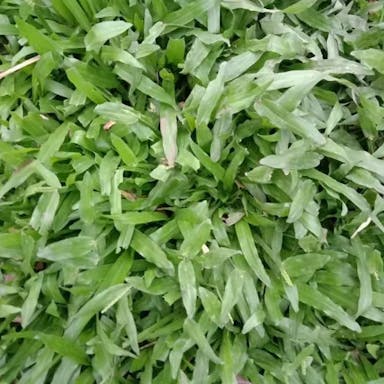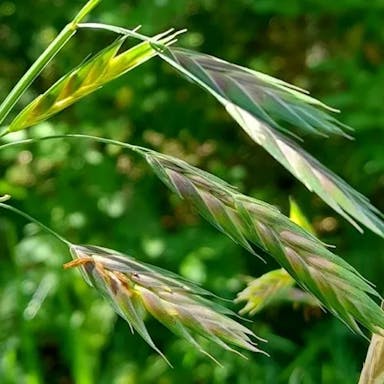Carex flacca, a perennial plant, features blue-green foliage and slender stems. It grows in Europe and Asia, often found in rocky or sandy areas. This sedge blooms inconspicuous brownish-green flowers during late spring to early summer. There are some varieties of this plant. Each has slightly different height and leaf width. Blue-green sedge can grow in well-drained soil and partial shade. It is low maintenance. Many novice and experienced gardeners like it for landscaping.
Blue-green sedge
- Scientific name
- Carex flacca
Basic Information
- Cyperaceae Family Carex Genus Blue-green sedge Species
- Cyperaceae > Carex > Carex flacca
- 83%
- The Completeness of This Encyclopedia
Please help us complete the encyclopedia, Terrarium is a encyclopedia service to be completed with everyone in the world. Currently, this page is 83% complete. For more information on how to contribute, please click here.
- Graminoid
- Perennial
- Height
- 20cm ~ 50cm
- Flower Color
- Leaf Color
- Anthesis
- spring, summer
- Sunlight Exposure
Full Sun Long hours of sunlight from morning to afternoon Partial Shade A location in the shade of a tree or where either the morning or afternoon is shaded Full Shade A place where there is no direct sunlight
- Hardiness Zones
This is an indicator to know to which zone each plant can winter. Knowing the zone of each plant gives you an idea of the cold temperature resistance when grown in the ground without a roof. 2: -42.7 to -40.0 3: -39.9 to -34.4 4: -34.3 to -28.9 5: -28.8 to -23.3 6: -23.2 to -17.8 7: -17.7 to -12.2 8: -12.1 to -6.7 9: -6.6 to -1.1 10: -1.0 to 4.4 11: 4.5 to 10.0
- 4
- Cold resistance
- Excellent
- Heat resistance
- Good
- Habitat of origin
- Europe, North Africa, Western Asia
- Growth Rate
- Normal
What is Blue-green sedge (Carex flacca)?
What is Blue-green sedge (Carex flacca)
Flower meaning
The blue-green sedge brings peaceful feelings for many in the USA. This plant's soft blue and green shades can create calm feelings and remind people of nature's balance.
Calendar of Blue-green sedge (Carex flacca)
Calendar
Blue-green sedge flowers during April to June for weeks in United States. Blooming requires adequate sunlight, water, nutrients. Avoid over-fertilizing as lead to excessive foliage growth instead of flowers. Deadheading spent flowers can also promote continuous blooming.
How to grow Blue-green sedge (Carex flacca)
Watering
For Blue-green sedge, watering frequency should be moderate, typically once every 7-10 days during the growing season. This plant prefers consistently moist soil, so ensure the top 1-2 inches of soil remain damp but not waterlogged. During the dormant season, reduce watering to once every 2-3 weeks to prevent root rot. Monitor soil humidity levels by inserting a finger into the soil; if it feels dry, it's time to water. Avoid overwatering as it can lead to fungal diseases. Adjust watering frequency based on environmental conditions such as temperature and humidity.
Soil and Fertilizer
Blue-green sedge thrives in well-drained soil with a pH level between 5.5 and 7.5. It prefers moist conditions but can tolerate periods of drought. To promote healthy growth, apply a balanced fertilizer with an N-P-K ratio of 10-10-10 in early spring. In May, use an organic, slow-release plant food to sustain growth over the summer. Avoid excessive fertilization which can create nutrient imbalances. Each year, test the soil to check pH levels and spot nutrient shortages. Adding compost can enhance soil quality and provide key nutrients. Regularly observe the plant's development and adapt fertilizing as needed.
Sunlight and Place
Blue-green plant grows in full light or shade partially. It likes at least 6 hours direct light everyday. It has moderate cold resistance, living in zones 5-9. It can handle heat perfectly. In winter, give some protection from intense conditions like putting cover around base. Best temperatures are between 60-75F (15-24C), minimum 50F (10C). In summer, water enough to avoid drying out. Blue-green plant benefits drainage in soil. It can be placed in different garden places. It shows power in light but can allow some shade. Try for 6-8 hours of light daily for best growth.
Advanced Information of Blue-green sedge (Carex flacca)
Pruning
Blue-green sedge benefits from pruning for shape and healthy growth. Necessary prune removes dead or damaged leaves, allowing new shoots to grow well. Best time prune Blue-green sedge is late winter or early spring before new growth starts. Use clean, sharp tools for precise cuts when pruning. Cut back overgrown or messy stems to ground level. After prune, use balanced fertilizer to encourage regrowth and water plant thoroughly. Regular pruning helps Blue-green sedge stay strong and beautiful in garden.
Planting and Harvest
Blue-green sedge grows better if placed in a container rather than directly in the garden because it spreads aggressively. To grow Blue-green sedge in a pot, select a pot with drainage and fill it with a well-draining soil mixture. Situate the sedge at the same depth as before, water completely, and put it somewhere with some shade. When it's time to repot, gently take the plant out of the old pot, loosen the roots, and put it in a slightly bigger pot with fresh soil. Mist the plant often to keep the humidity up. If the sedge gets overgrown, carefully divide it to avoid damage and encourage healthy growth.
Propagation
Blue-green sedge can be propagated through division or seed sowing. Blue-green sedge cuttings taking from stems or leaves in spring or summer season. Place cutting in moist, well-draining soil and keep in warm, sunny area. Also sow seeds in fall or spring in mix with good drainage. Keep wet until seeds start to grow.
Pests and Diseases
Blue-green sedge is susceptible to various pests and diseases. Aphids can cause damage sap sucking from the plant. Slugs feed on the foliage, leaving behind holes. Leaf spot is a fungal disease that manifests as spots on the leaves. To prevent aphids, regular inspection and the soap application can be effective. Slugs can be deterred by removing debris and creating barriers like tape around. Fungal diseases like spot can be prevented by good air circulation avoiding overhead watering to moisture on the leaves.
Habitat of Blue-green sedge (Carex flacca)
Habitat
Toxicity of Blue-green sedge (Carex flacca)
Health Benefits
- edible
- Inedible
- Toxic
- No toxicity
NO DATA
Toxic for dogs and cats
NO DATA
Q&A of Blue-green sedge (Carex flacca)
- choice
Quality seeds and healthy seedlings are vital for good development of Blue-green sedge plants. Two key varieties are offered: 'Blue Zinger' and 'Blue Bunny'. First one has eye-catching bluish-green leaves and thrives in damp ground. The second variety is more compact and works in small areas. When picking seeds, choose plump and undamaged ones. For seedlings, select those with strong stems and vibrant foliage. Make sure roots are healthy and not bound in pots. Selecting high-grade seeds and seedlings helps grow robust Blue-green sedge plants.












